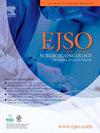Geographic variation in surgery rates among older patients with early (ER positive HER2 negative) breast cancer: Influence of cardiovascular disease and comorbidities: A national registry dataset analysis
IF 2.9
2区 医学
Q2 ONCOLOGY
引用次数: 0
Abstract
Introduction
Women over 70 years of age with operable oestrogen receptor positive (ER positive) breast cancer have worse survival outcomes than younger women. Primary surgery is the optimal treatment with primary endocrine therapy reserved for patients who are unfit or who have multiple co-morbidities. Inferior outcomes in this patient population might be explained by underuse of surgery, the rates of which vary considerably between geographical regions in the UK. We determined the rates of surgery versus primary endocrine therapy in a cohort of women aged over 70 in England, with potentially curable ER positive breast cancer, according to the presence of pre-existing cardiovascular disease (CVD), comorbidities, social deprivation, and by geographical location.
Materials and methods
33,235 women aged 70 years or older with stage I to III ER positive breast cancer from the 20 regional NHS Cancers Alliances in England were identified from the cancer registry. Linked hospital records were used to identify patient demographics, tumour and treatment characteristics, resection rates, CVD prevalence and other co-morbidities.
Results
25,800 (77.6 %) patients underwent surgery, 6787 (20.4 %) patients received primary endocrine therapy alone, 648 (2 %) patients received no treatment. Both CVD and surgery prevalence varied by geographical location. After adjustment for case mix the differences between Cancer Alliances attenuated and no longer reached statistical significance.
Conclusions
We found regional differences in rates of surgery in patients with breast cancer across different centres. After adjustments, the variation is largely attributable to case mix. Under recording of endocrine therapy data in secondary care limits full interpretation.
老年早期(ER阳性HER2阴性)乳腺癌患者手术率的地理差异:心血管疾病和合并症的影响:一项国家登记数据集分析
70岁以上的可手术雌激素受体阳性(ER阳性)乳腺癌患者的生存预后比年轻女性差。初级手术是最佳的治疗方法,初级内分泌治疗保留给不适合或有多种合并症的患者。在这一患者群体中,较差的结果可能是由于手术的使用不足,其比率在英国的地理区域之间差异很大。根据既往心血管疾病(CVD)、合并症、社会剥夺和地理位置,我们确定了英国70岁以上的具有潜在可治愈的ER阳性乳腺癌的女性队列中手术与初级内分泌治疗的比率。材料和方法从英国20个地区NHS癌症联盟的癌症登记处确定了33235名年龄在70岁或以上的I至III期ER阳性乳腺癌妇女。相关的医院记录用于确定患者的人口统计学特征、肿瘤和治疗特征、切除率、心血管疾病患病率和其他合并症。结果25800例(77.6%)患者接受手术治疗,6787例(20.4%)患者接受单纯内分泌治疗,648例(2%)患者未接受内分泌治疗。心血管疾病和手术患病率因地理位置而异。在对病例混合进行调整后,癌症联盟之间的差异减弱,不再达到统计学意义。结论:我们发现不同中心乳腺癌患者的手术率存在区域差异。调整后,差异主要归因于病例混合。在二级保健中记录内分泌治疗数据限制充分解释。
本文章由计算机程序翻译,如有差异,请以英文原文为准。
求助全文
约1分钟内获得全文
求助全文
来源期刊

Ejso
医学-外科
CiteScore
6.40
自引率
2.60%
发文量
1148
审稿时长
41 days
期刊介绍:
JSO - European Journal of Surgical Oncology ("the Journal of Cancer Surgery") is the Official Journal of the European Society of Surgical Oncology and BASO ~ the Association for Cancer Surgery.
The EJSO aims to advance surgical oncology research and practice through the publication of original research articles, review articles, editorials, debates and correspondence.
 求助内容:
求助内容: 应助结果提醒方式:
应助结果提醒方式:


